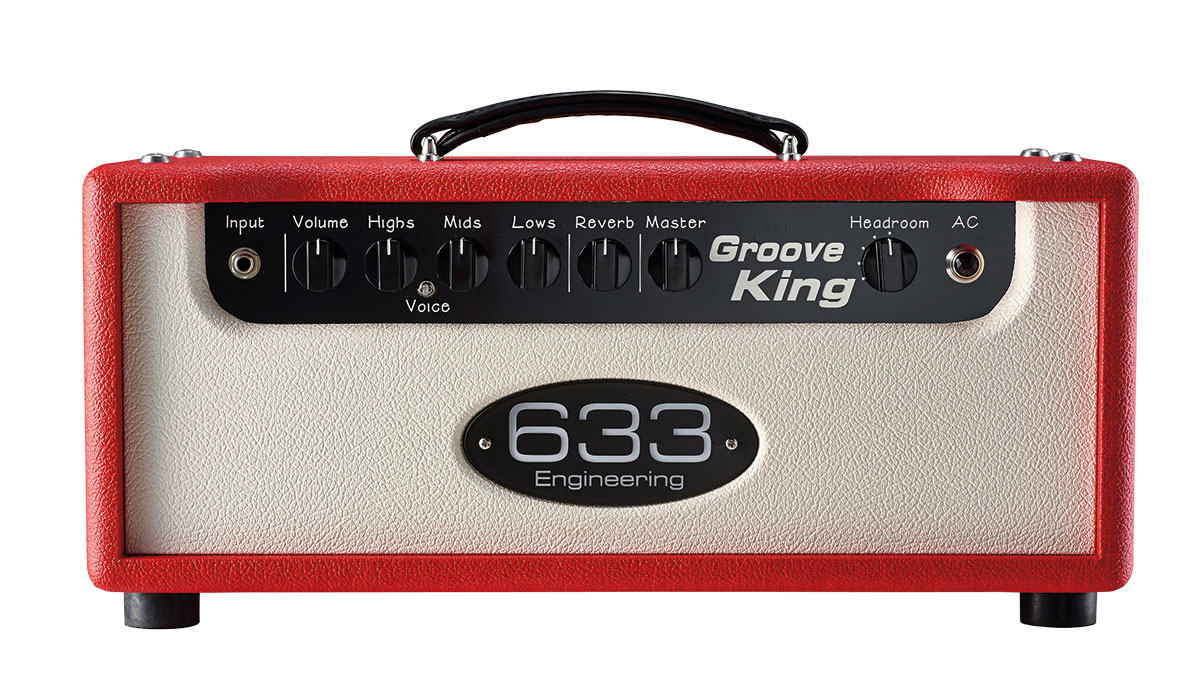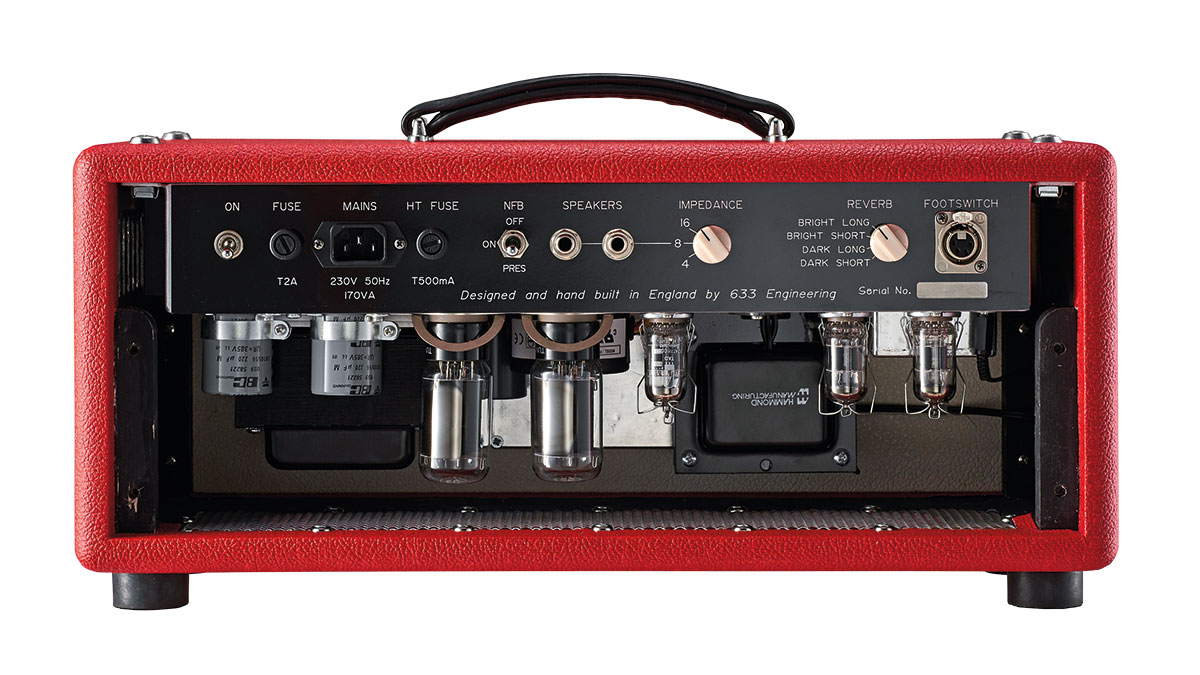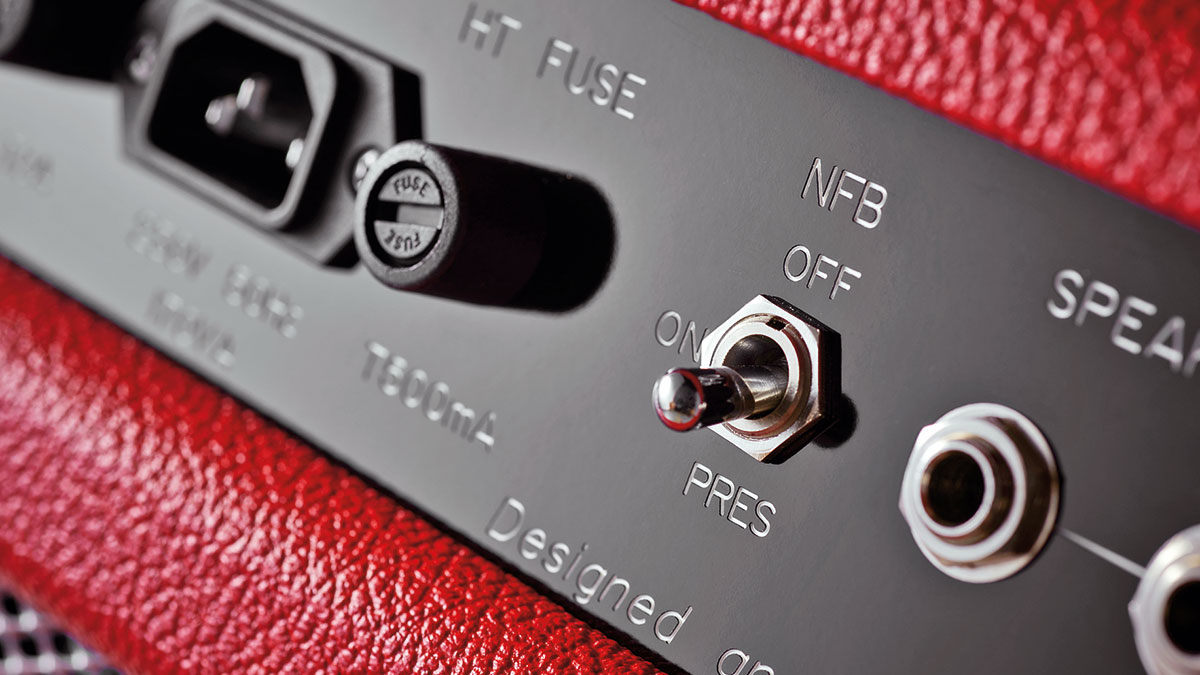MusicRadar Verdict
These amps are built to last. Add up how many amps you might buy in the rest of your playing career and 633 looks to be great value for money in our book.
Pros
- +
Astonishing tone; great flexibility within its range; build quality to last a lifetime.
Cons
- -
It can take a little while to dial in; the price tag is the only other downside.
MusicRadar's got your back

633 Engineering Groove King Head

633 Engineering Groove King Head

633 Engineering Groove King Head
We're looking at a new brand from the UK that threatens to upset the US boutique applecart with a heavyweight reputation that's already attracting international interest.
Aside from founder Cliff Brown's CV, he's also a seriously good player. So, 633 Engineering offers a range of contemporary heads with some unique features and a service that is truly bespoke, meaning you can specify a variety of tweaks to bring you closer to your vision of the perfect amp.
Here, we're looking at the Groove King, which can be customised but is more of a production amp. The head is surrounded by a high-quality birch ply sleeve, fabricated on CNC equipment for a flawless finish and consistently accurate joints. Behind the elegant computer-engraved control panel, there's a heavy-duty aluminium chassis that supports all the electronics.
All the components are top quality - Hammond transformers, Neutrik sockets and Vishay capacitors are more commonly found in lab equipment or high-end studio gear, while the wiring has the same look and feel of some classic valve studio outboard modules. The attention to detail is almost obsessive. For example, Brown dismantles the rotary switches and hand-files the register plates to achieve exactly the right kind of 'click' as the switch is used.
The Groove King is a single-channel amp with expanded EQ, a footswitchable boost that 633 calls 'More', and a clever variable headroom feature that progressively raises or lowers the amp's output wattage from full power down to around six watts in five steps, as well as changing from fixed bias to cathode bias. Other features include a high-quality digital reverb with a choice of delay times and bright/dark tone settings.
The Groove King's footswitch has a couple of useful DC outlets to power other stompboxes. The footswitch is finished in a crackle black paint finish and is built to last, terminating in locking Neutrik XLR sockets.
"The silicon-rectified Groove King is loud, warm and slightly restrained, until the built-in TS-style overdrive pedal is kicked into action."
The Groove King's front panel has a single input jack with controls for volume, highs, mids, lows, reverb and master. There's a three-way voicing switch at the front of the preamp that changes the midrange emphasis, and a rotary 'Headroom' switch. The rear panel has a toggle switch that controls the amp's negative feedback, with a choice of on, off or presence. A pair of speaker outlets are controlled by a rotary impedance selector, with another rotary switch to select the Groove King's digital reverb voice with choice of bright or dark and long or short delays.
Want all the hottest music and gear news, reviews, deals, features and more, direct to your inbox? Sign up here.
This amp is built to a standard that matches or exceeds the very best we've ever seen; the attention to detail holds up under close inspection, beating many high-end mass-produced products.
Sounds
We tried out the 633 with a selection of guitars including several Custom Shop Stratocasters and Teles, together with
a PAF-powered Les Paul Standard and an original 1972 Les Paul Custom. The amp powers on smoothly and quietly, with the illuminated 633 logo ramping up in brightness rather than just switching on - very cool.
Played clean, there's a level of clarity we haven't experienced before with any guitar amplifier, helped by the almost total lack of background hum and hiss.
But where you might expect such transparency to magnify every minuscule fret buzz or fluffed note, the 633 seems to have a magic filter that removes the bad stuff. No matter what instrument we plugged in, they all sounded more focused, resonant and alive, with a very subtle compression that makes notes and chords hang in the air with an almost three-dimensional presence.
The overdrive tones are warm and smooth, with a strong USA influence and a controlled dynamic response that means all of the note is heard, not just the attack. The individual tonal characteristics of all our test guitars were distilled and focused; the variations between the Strats and Les Pauls we used were more obvious than ever before, highlighting subtle differences such as the fatter midrange punch of the '72 Custom and the slightly scooped PAF tones of our LP Standard.
The same subtle compression effect that flatters the 633's clean sounds adds an almost unearthly sustain that makes soloing great fun, with tricks like doublestop bends and pinched harmonics all too easy to pull off. "That effect is deliberately designed in," says Cliff. "I noticed it on an early amp and traced it to a faulty component, then I had to work out how to duplicate the effect and control it."
The silicon-rectified Groove King is loud, warm and slightly restrained, until the built-in TS-style overdrive pedal is kicked into action.
Amps in this price bracket need to perform to exceptionally high standards to justify themselves, whether they're one-trick ponies or ultra-flexible jacks of all trades. The 633 Groove King has enough range to handle anything within the above genres, with tones that will rock you back on your heels when you hear them.
The only thing we can find fault with is purely subjective: while we love the Groove King's flexibility, we're not so enamoured with this sample's drive pedal; we'd go for something less compressed, such as a Klon clone or a Zen. Thankfully, 633 will fit almost any drive pedal circuit into its footswitch.